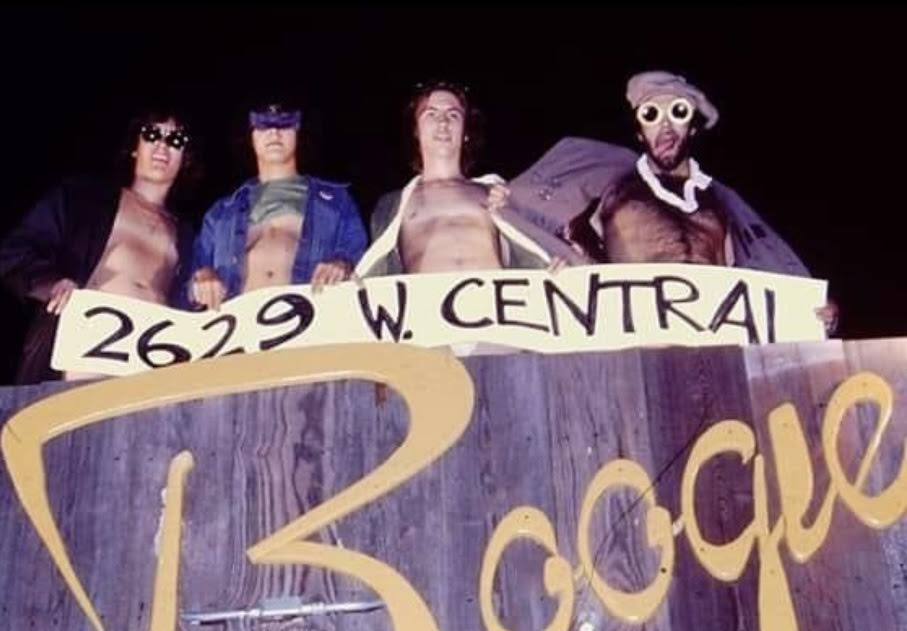Bruce Springsteen covered by the Homewrecker in smoky, dank little bars
In November 1973, Bruce Springsteen released The Wild, The Innocent & The E Street Shuffle.
Springsteen was signed to Columbia Records (label to Bob Dylan, Miles Davis, Simon & Garfunkel, Leonard Cohen, amongst other greats) and had released one previous LP, the underperforming Welcome to Asbury Park.
Initially, the second album didn’t perform much better than its predecessor. FM radio, although better than it is today, was beginning to undergo its transformation into an over-analyzed, money-making, staid enterprise. Springsteen’s second output was not rife with the Journey/Kansas/Styx drech to warrant any sort of staying power on the FM bandwidth (isn’t that ironic?). But fate was not done with this Jersey kid.
Sometime in January 1974, at approximately 2:30 in the morning, I was driving home after a gig at The Zodiac Lounge on Sylvania Avenue in Toledo. My band at the time was The Raisin Band. I wish to state that this is not to be confused with the current conglomerate known as The Raisins, based in Cincinnati, yet containing two of the members (Rob Fetters and Bob Nyswonger, both musicians extraordinaire) that I played with. Confused yet?
Anyway, I was living in the Old West End, on Rockingham, with a glass blower for a roommate. After getting off I-475, I flipped on WIOT, the powerhouse album rock station of Toledo. Expecting to hear The Doors, Led Zep or the aforementioned dismal offerings (my opinion) that commandeered the FM airwaves in those days, there was instead a fresh, wonderfully alluring sound emanating from the radio of my Toyota Corolla! How DARE this DJ pop the unexpected into my tired auditory canal in the wee hours!
This song, totally new to me, woke me from my driving stupor, excited me and even put a smile on my face. Even the structure of the song was different – not the typical “verse-chorus-verse.” No, this slice of rock’n’roll bravely rambled all over the airwaves, going verse-chorus-verse, then – wait, what was that?? winding up (never down) in a huge “HEY! HEY! HEY! HEY!” group chorus, and ending in an insane runaway guitar loop on an echo chamber. Something like this hadn’t happened to my ears in a long time! And all over a shitty car speaker!
I quickly parked my car, ran up the stairs to my second-floor home, and grabbed the phone – landline, y’know. I must’ve called information to get the number of the station first, then dialed it.
An aside: DJs in those days (maybe still?) were infamous for not picking up the phone. Sure, there were whackos out there who would taunt the DJ or request “In-A-Gada-Da-Vida” 90,000 times per shift, but couldn’t the DJ tell by the sincere tone of my ring that I was DESPERATE to find out who did this magnificent song?
After approximately 15 minutes of ringing, the on-air personality finally picked up. He was confronted with a maniac.
YEAH, I WAS JUST DRIVING IN MY CAR AND YOU PLAYED A SONG. IT WAS GUITAR DRIVEN, SAXOPHONE, GRAVELLY VOICED SINGER, SINGIN’ ABOUT SOME GIRL!! . . .
Steven J Athanas

Calmly, the DJ responded. “Umm, yeah, that was Bruce Springsteen.”
”WHAT WAS THE NAME OF THAT SONG???” I demanded to know.


A pause. “Rosalita,” he said, “then (Come Out Tonight) in parentheses.” This DJ was nothing if not thorough.
The next day I drove to Boogie Records, when it was still on Central at Douglas, and ran into the store. I worked there as a cashier and music aficionado (ha ha!), so I greeted the person there and quickly went to the S’s in the rock’n’roll section. Thumbing through the section: Steppenwolf, Steeleye Span, Sam & Dave, Santana.
And then, there it was – a portrait of a scraggly-bearded guy looking off to the side, rubbing his mustache with his right hand. And for $3.99 (a red dot at Boogie), I owned a copy of a record that would shape my musical persona for a good many years to come. I know I wore out at least four copies of that LP. Then, technology graced me with a CD that stood up much better.
At the very next Raisin Band rehearsal, I told the fellas about this New Jersey punk, and shortly thereafter we were doing our version of “Rosy,” as it affectionately became known. And for four to five decades my bands invariably added the tune to our roster. Crowds loved it, demanded it! From The Raisin Band to The Homewreckers, we would most assuredly end the night with it. Now that’s staying power!
According to Forbes Magazine, Bruce Springsteen, at 74, just achieved the status of becoming a billionaire – yeah, with a “b”. Although I don’t follow him as heavily as I used to, he’s still out there, putting on three-to-four-hour performances, pleasing the masses.
After the release of The Wild, The Innocent . . ., he got hip to Woody Guthrie, and became the rocker with a message, a musical representative of the people. Whereas, that second album was all over the musical map: rock’n’roll, jazz, funk, folk – FUN! He’s settled to me. Nevertheless, he deserves it.
But, y’know what? You’re welcome, Bruce, for all the copies of The Wild, The Innocent and The E Street Shuffle purchased by those inebriated Toledoans and BG-ans (?) who had spent the night before in some smoky, dank little bar listening to this guy’s band covering the soon to be crowned Boss’ music.

























